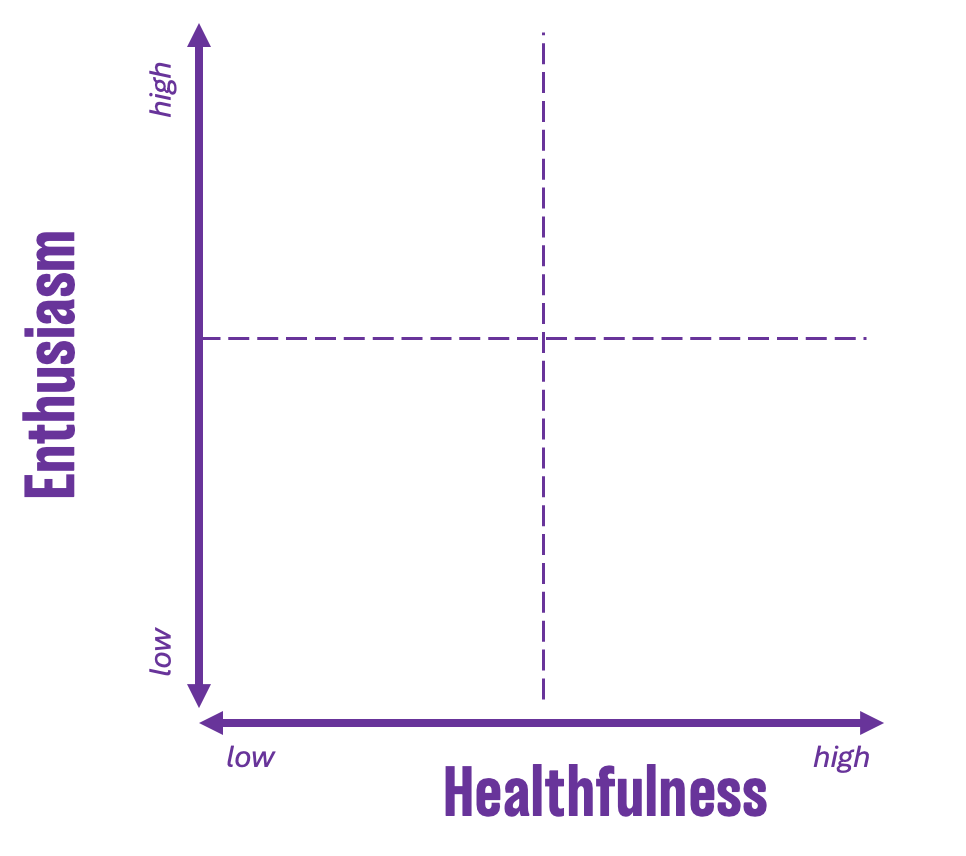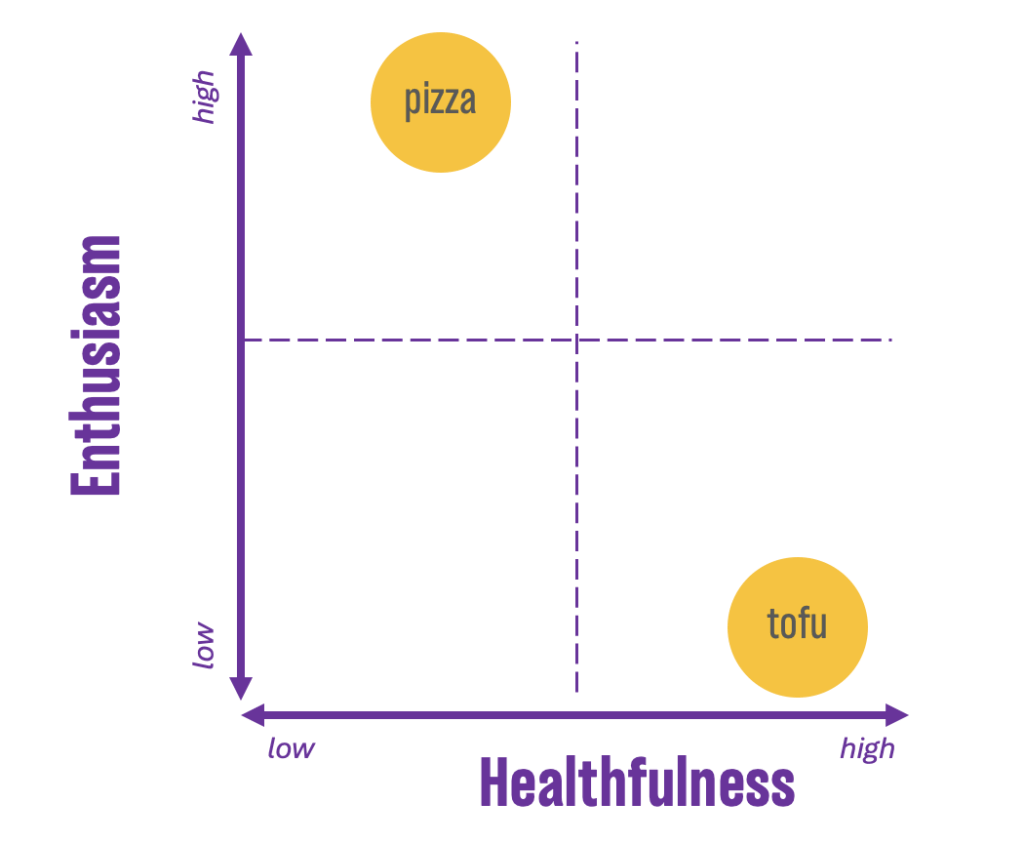Into the Matrix – Rule/Skill #5
This is the seventh post in our 14-week series exploring the 4 Questions and 10 Rules of Strategic Doing, first outlined in this October 2023 blog post.

We’re at the midpoint of our journey through the ten rules/skills of agile leadership, and that means it’s time to go “into the matrix.” No red or blue pills here, though – it’s a different kind of matrix, with a very different purpose. This rule is one way to help you answer the question “What should we do?”

The number of choices that confront us every single day is astounding: more than 35,000. More than 200 of those are just about food! The options open to us for each of those choices can also be very large: there are more than 100,000 recipes on Allrecipes, for example. Fortunately, the set of options is usually more manageable. Still, especially if we’re making decisions as a group, we need a way to filter down to the “right” choice (or at least, the “right-enough-for-now” choice) without getting paralyzed or spending hours in discussion.
There are many ways to come to this decision: talking until you get to consensus (or consensus minus one), majority wins voting, and sticky-dot voting (which you can do on a virtual whiteboard like Mural or Miro, too). Using a 2×2 matrix should be in your toolbox as well to help you find your “Big Easy”.
Why a 2×2 matrix?
One of the biggest drawbacks of the other decision-making methods is that they don’t allow for complexity very well: often you need to balance different factors. To return to the food metaphor, maybe you want to cook something for dinner that everyone in the family will love AND is healthy. There might not be any choice that will completely satisfy both of those desires, but pitting them against one another isn’t useful.
The 2×2 matrix helps you identify the trade-offs between two criteria, and helps you make a decision that balances them. In a group, it also makes the trade-offs transparent so that no one feels blindsided or ignored.
How to use a 2×2 matrix
Decide what your two criteria are: when we’re conducting a Strategic Doing workshop at the Lab, we use “impact” and “ease of implementation” (that’s why we call this “The Big Easy”), but you could pick any two criteria that seem to be at odds with one another. Draw a 2×2 matrix that has one criterion on each “axis.” For the meal-planning decision, those might be enthusiasm and healthfulness:

Look at each of your options, and decide where in the matrix it goes. In our example, pepperoni pizza might be something everyone would love, but the nutrition is questionable. Tofu scramble, on the other hand, is certainly nutritious but possibly a hard sell for the kids.

If you’re using the matrix with a group, using the sticky dots with a flipchart works well. Assign a different color dot to each person, and have them label each dot with a number corresponding to one of the options.
Once all of the “votes” are in, take a look at the matrix. The best choice is probably the one that’s the closest to the upper right corner. It’s probably not at the corner, though – there is rarely an option that perfectly satisfies both criteria (certainly true in this example). In a group, this is the point at which to talk over tradeoffs among the options represented by the dots closest to that magic spot. You might end up with a new choice by adapting the others: here, perhaps it’s choosing pizza with soy-based sausage rather than pepperoni: that essentially scoots that dot to the right, closer to the desired area.
Why does the 2×2 matrix work?
Beyond the fact that the mechanics of the matrix balance the relevant criteria, the 2×2 matrix, when used with a team, rests on the idea of group intuition (sometimes called the “wisdom of the crowd”). No one person usually sees perfectly the strengths and drawbacks of every option. But with enough voices, the group will usually get it right. It’s true even when there are “experts” in the group: outsiders to a domain add perspective that the experts often miss.
Action step: Try it! The 2×2 matrix can even be a personal planning tool. Take your to-do list, and plot what your tasks are in terms of importance vs. ease of completion. Tackle the ones in the top right quadrant first.
Learn more: Not convinced about the idea of group intuition? Here’s a great video demonstrating the idea.
Read Rule #6.

Liz shepherds the expansion of the Lab’s programming and partnerships with other universities interested in deploying agile strategy tools. A co-author of Strategic Doing: 10 Skills for Agile Leadership, she also focuses on the development and growth of innovation and STEM education ecosystems, new tool development, and teaching Strategic Doing.
